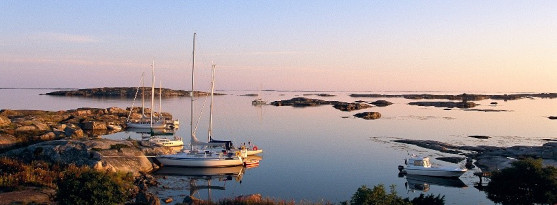
In English
The Käppala Association treats wastewater from over 500 000 inhabitants in eleven municipalities located north and east of Stockholm. Our treatment plant, the Käppala wastewater treatment plant, is Sweden’s third-largest, and employs a very effective treatment process.
Before the Käppala plant started operating, huge amounts of raw sewage were discharged into local watercourses, lakes and the Stockholm archipelago. This caused problems involving disease transmission and environmental pollution. In 1957, several municipalities north of Stockholm joined forces and formed the Käppala Association, a local federation, to treat their wastewater.
Twelve years later, in 1969, the Käppala wastewater treatment plant in Lidingö was completed – including the 65 km long tunnel system that carries wastewater to the plant from the association’s member municipalities. Following a major rebuilding and extension project, the plant was re inaugurated in 2000.
Nowadays, you can swim and fish in clean water in and around Stockholm, which is unusual compared with many other major European cities. The Käppala Association has been one of the key players behind this positive development.
The Käppala plant is an underground facility. Wastewater is treated in large chambers blasted into the rock. Every year, we treat approximately 50 million cubic meters of wastewater. This represents approximately 700,000 bathtubs per day. We always use a combination of mechanical, biological and chemical treatment. It takes about 1.5 days to treat the wastewater before it is returned to nature at a depth of 45 m outside the island of Lidingö.
The Käppala plant comfortably meets the discharge requirements stipulated by the regulatory authority, the County Administrative Board. However, we are not content with that. In accordance with our quality and environmental management system, we strive for continuous improvement and to be able to contribute to a sustainable society. We are keen to test new technologies, partly to make our treatment process even more efficient, partly to increase biogas production, and to be able to produce high-quality sludge.
Dela sidan